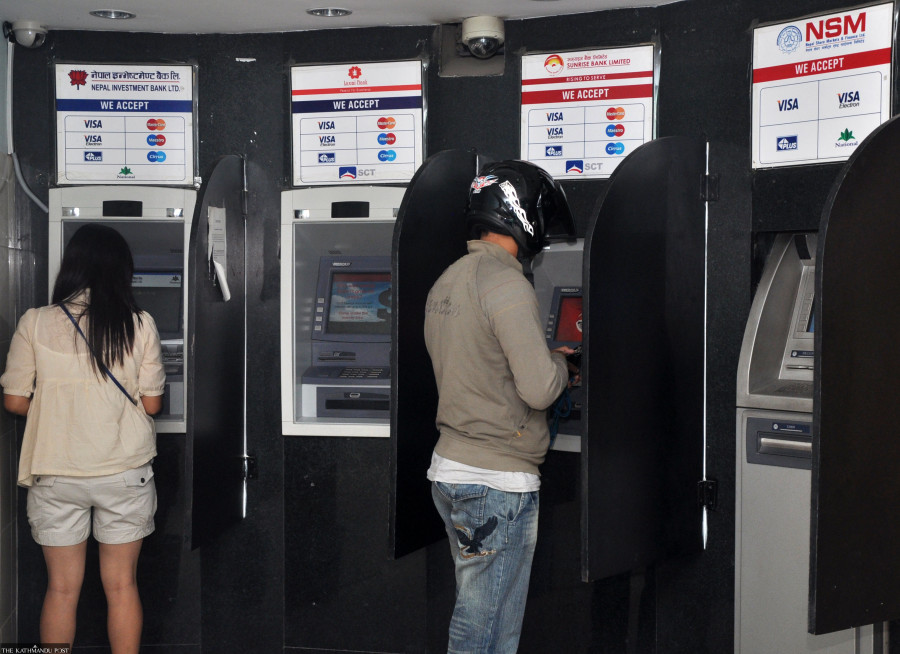Money
Nepal’s financial sector doing well in post-pandemic economy
Profitability of the banking sector rose by 21.01 percent to Rs71.30 billion in the last fiscal year ended mid-July 2021.
Krishana Prasain
The two-year-long Covid-19 pandemic hammered the economy and pushed many companies to the edge of bankruptcy, but Nepal’s financial sector has rebounded quickly and remained sound and resilient, the latest central bank report says.
According to the Financial Stability Report released on Thursday by Nepal Rastra Bank, profitability of the banking sector rose by 21.01 percent to Rs71.30 billion in the last fiscal year ended mid-July 2021.
In the previous fiscal year, profitability had declined by 20.61 percent.
Net profits of commercial banks grew by 16.60 percent to Rs63.37 billion in the last fiscal year, compared to a sharp 16.66 percent drop in the previous year.
All commercial banks posted profits in the last fiscal year.
The contribution of interest income was 81.39 percent of the total income in the review year, down from 86.52 percent in the previous year.
The pace of credit flows from banks and financial institutions increased by 27.76 percent in the fiscal year 2020-21 compared to a 12.32 percent growth in fiscal 2019-20.
Bank deposits swelled by 20.50 percent in fiscal 2020-21, up from 17.27 percent in the pre-Covid period of fiscal 2018-19, as per the report.
“Nepal’s banks and financial institutions have stood reasonably sound in terms of capital, liquidity and asset quality,” the report said. “Largely, overall indicators of the financial system remained acceptable and the stress situation could not be noticed.”
Nepal’s economy is in the recovery phase from the Covid-19 pandemic shock. Economic activities have been expanding along with the easing of Covid-19 restrictions and availability of vaccines in recent months.
As a result, credit to the private sector has surged in recent months, resulting in the expansion of money supply and upward pressure on asset prices, the report said.
However, an increase in domestic demand amidst rising prices of petroleum products is likely to put pressure on inflation.
Anil Kumar Upadhyay, CEO of Agricultural Development Bank and president of the Nepal Bankers’ Association, says economic activities have been increasing, raising money demand in the market with the improving pandemic situation.
“But with the economic slowdown and high inflation, the situation is challenging. The government has taken control measures on time like restricting imports of certain goods, so the financial situation will not be as bad as anticipated,” he said.
"Rising money demand and global inflation created price pressure impacting liquidity management as most goods are being imported with little domestic production. Also, the government was not able to spend the capital budget on time while the inflow of foreign investment remained relatively low," he said.
“Chances of an improvement in the liquidity crisis anytime soon are less. We are facing economic imbalances due to the dependency on imports and low domestic production and exports. Control measures have been taken including import restriction in certain goods,” he said.
“As we do not have a country rating, big joint ventures and foreign investors do not invest in Nepal, which has impacted the money supply,” Upadhyay said.
According to the Central Bureau of Statistics, the growth rate of Nepal’s economy stood at 4.0 percent in the fiscal year 2020-21 compared to a negative growth rate of 2.1 percent in the fiscal year 2019-20.
According to the report, interest income is the major source of income for banks and financial institutions. The banking sector is still highly dependent on the traditional activities of lending and deposit mobilisation.
The gain from exchange fluctuation was 2.38 percent in 2020-21.
“We have not been able to go for bonds, external borrowing, long-term resources and debentures. Low capital expenditure by the government has kept the market small,” Upadhyay said. "The country is dependent on trading where imports are high and exports are low which does not generate a value chain."
As of mid-July 2021, the number of banks and financial institutions had shrunk to 133 including 27 commercial banks, 18 development banks, 17 finance companies, 70 micro finance institutions and one infrastructure development bank.
In addition, 19 life insurance companies, 20 non-life insurance companies, two reinsurance companies and several non-bank financial institutions and a postal savings bank are operating in Nepal.
After the introduction of merger bylaws, 229 banks and financial institutions had undergone the process of merger and acquisition as of mid-July 2021.
Commercial banks had 4,753 branches, development banks 1,023, finance companies 222 and micro finance institutions 4,685 branches as of mid-July 2021.
The branch offices of banks and financial institutions, excluding micro finance institutions, serve around 5,065 people on average, the report said.
There are wide ranges of financial institutions in operation, but no significant imbalances have been noted in the financial ecosystem of Nepal, the report said.
According to the report, there has been significant expansion of the balance sheet of banks and financial institutions mainly due to the increment in deposits and credit.
“An increase in deposits is mainly driven by an increase in banking habits, expansion in banking outreach, wider adoption of information technology and increasing remittance inflows,” the report said.
"A growth in credit issue by banks and financial institutions is driven by expansion of full-fledged banking services in local units, increase in financial literacy and awareness supported by banks and financial institutions. Likely pressure on the external sector may cause tight liquidity conditions, resulting in an upward pressure on interest rates,” the report said.




 13.12°C Kathmandu
13.12°C Kathmandu















